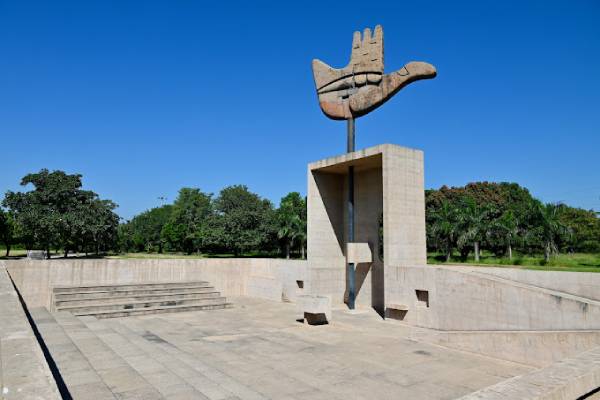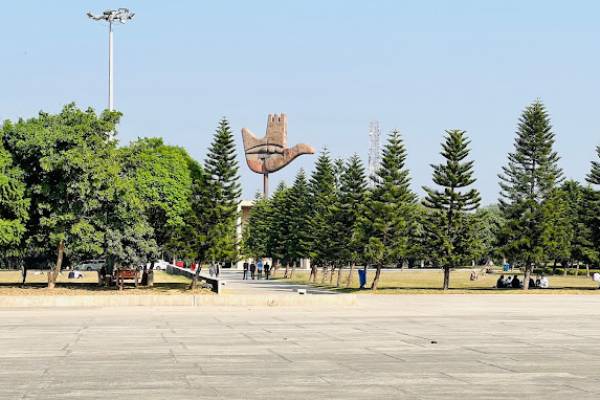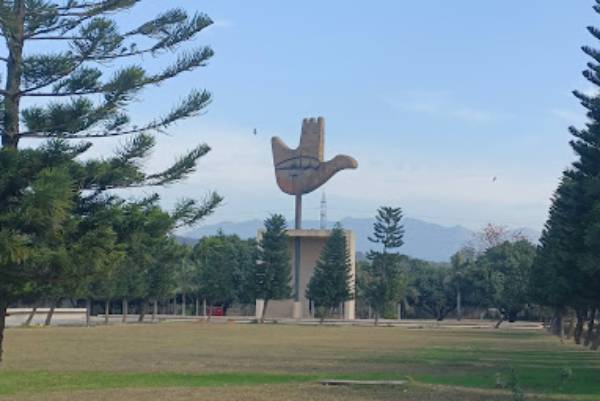In the heart of Chandigarh, India, stands a remarkable structure known as the Open Hand Monument. This emblematic creation, conceived by the renowned architect Le Corbusier, graces the Capitol Complex and serves as a powerful symbol for the Government of Chandigarh. Its significance lies in representing ideals of generosity, tranquility, prosperity, and the unity that binds humanity together.
A Towering Tribute
Soaring to a height of 26 meters (85 feet), the Open Hand Monument stands as the largest among Le Corbusier’s many Open Hand sculptures. Its metallic form, equipped with vanes, extends 14 meters (46 feet) into the sky, weighing a substantial 50 short tons (100,000 pounds). An intriguing feature is its ability to gracefully rotate with the wind.

Symbolism: An Open Hand of Peace
In Le Corbusier’s architectural endeavors, the Open Hand (or “La Main Ouverte” in French) emerges as a recurrent motif, embodying notions of peace, harmony, and the spirit of giving and receiving. For the architect, it encapsulates the essence of an era he termed the “Second Machine Age.”
Where Nature Meets Art: Location and Backdrop
Nestled in Sector 1 within the Capitol Complex of Chandigarh, the Open Hand commands a breathtaking view of the Himalayan Shivalik hill range. This strategic placement adds a sublime touch to its already profound symbolism.


A Vision Born of Struggle and Reflection
The genesis of the Open Hand Monument can be traced back to 1948, when Le Corbusier grappled with profound feelings of discord and disharmony among humanity. This internal turmoil culminated in the conceptualization of this monumental symbol, representing unity and the possibility of reconciliation.
Le Corbusier’s affinity for the hand dates back to his youth, when he picked up a single brick at the age of seventeen-and-a-half. This seemingly simple act set in motion a career that would witness the laying of millions of bricks. It was Jane Drew who recognized the importance of making Le Corbusier’s philosophy tangible to the people of Chandigarh. Thus, the Open Hand transitioned from being a private symbol to a public endeavor, intended for the city Le Corbusier played a pivotal role in planning and designing.
Features: A Monument in Motion
The Open Hand Monument is a marvel of engineering, rising to an impressive 26 meters (85 feet) above a trench spanning 12.5 by 9 meters (41 feet by 30 feet). The metal wind vane, resembling a graceful bird in flight, reaches a height of 14 meters (46 feet) and tips the scales at a formidable 50 tons. Meticulously crafted in sheet metal at the Bhakra Nangal Management Board’s workshop, its surface gleams with polished steel. The vane is mounted on a steel shaft equipped with ball bearings, allowing it to respond freely to the whims of the wind.
In this way, the Open Hand Monument not only stands as a testament to Le Corbusier’s visionary ideals but also as a striking embodiment of peace, unity, and the boundless potential of the human spirit.
